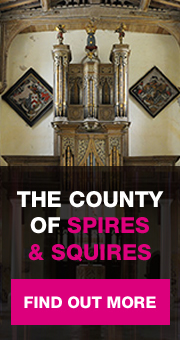Once the most important royal castle in the south midlands, Northampton Castle had a substantial defence as it was surrounded by a huge wall and on its side was an extension of the river Nene. The castle was first built from wood, then from distinctive sand stone. During the mediaeval period parliament, trials, tournaments and feasts were held here, the castle playing a key role in the town's development.
Before his assassination, Thomas Becket was held here and in 1205 King John, who had visited the castle several times, moved his royal treasury here. By the mid-16th Century, the castle suffered several destructive phases and was also negatively affected by the plague. As a reprisal for the town's allegiance during the Civil War, the castle stones were reused for other buildings in the town and as a result of later development, only a fragment remains of the castle today.
The site remains but the only visible structure is the Postern Gate, which was excavated in the 1860s and moved to its present location on the castle boundary wall.







